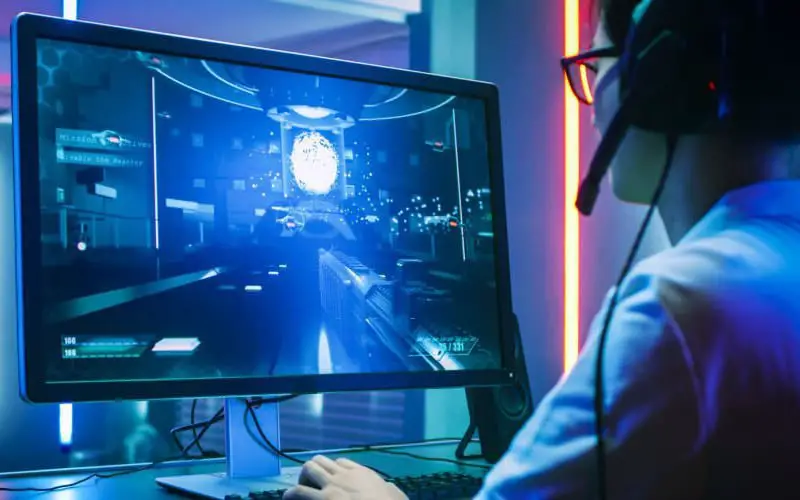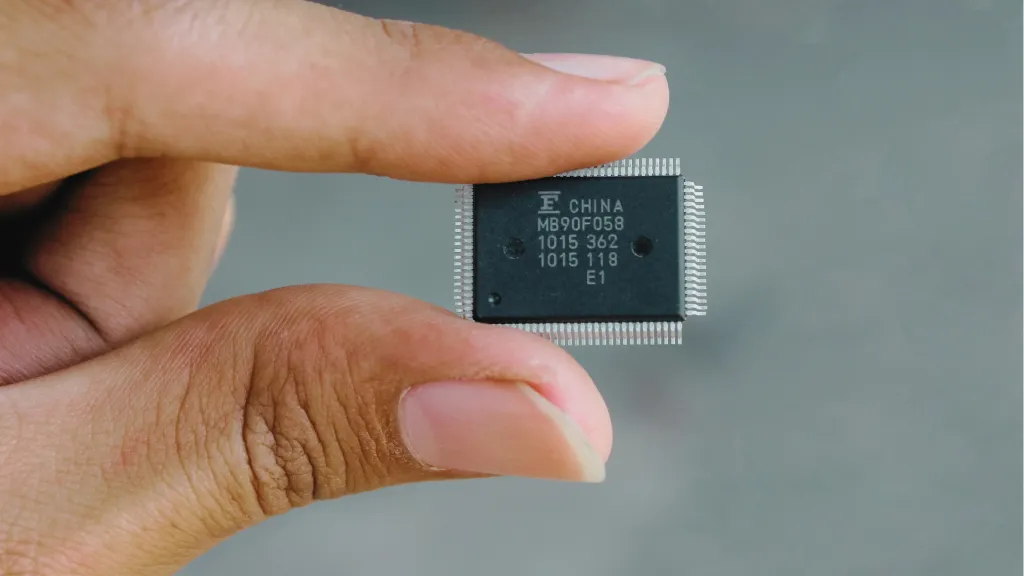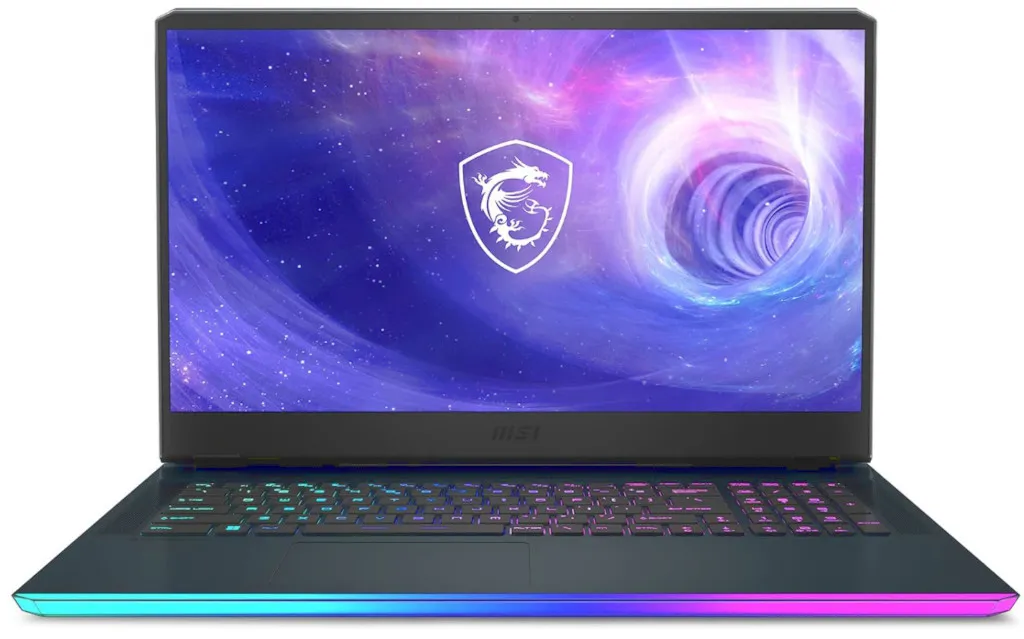One of the first things gamers think about when they decide to buy a new monitor is whether they want to get one designed specifically for gaming or if they can get away with just using their old monitor that has been collecting dust since they bought the PC.
Although this might seem like an easy question, some aspects need to be considered before making the final decision. Is the regular monitor going to be good enough? Or does it require some upgrades?
Read on to learn more about gaming monitors and their differences from regular monitors. And don’t forget to make your choice at the end!
What is a Normal Monitor?
A normal monitor is a regular computer monitor that runs games and apps, just like a gaming monitor. It has the same features as a gaming monitor but doesn’t have some extra bells and whistles that many gamers want in their monitors.
For example, it might not have as high of resolution or as good of refresh rates. While these things don’t matter to everyone, they do matter to some people, so if you are one of those people, you will want to go with a gaming monitor instead of a normal one.
What is a Gaming Monitor?
Gaming monitors are specially designed to provide gamers with a better experience. They can also be used for other purposes but were primarily created for gaming.
These monitors usually have special features ideal for gaming, such as high refresh rates and low response times. Many different types of gaming monitors are available on the market today, and you should know what each one is before making your purchase decision.
Difference Between Gaming Monitor and Regular Monitor
There is a substantial difference between gaming monitors and regular monitors in terms of functionality. Gaming monitors, for example, typically have higher refresh rates (up to 144Hz) and adaptive sync technology (like G-Sync or FreeSync).
These technologies prevent screen tearing when playing fast-paced games like first-person shooters or racing games. They also help reduce input lag, which is how long your monitor takes to display what’s happening on your PC after you press a button on your keyboard or move your mouse.
To relate more to these differences, consider watching this video comparing one gaming monitor brand with a standard monitor.
Let’s dive deep into these and more differences.
1. Refresh Rates
Refresh rate is how many times your monitor refreshes its image per second. The higher your refresh rate, the smoother your gameplay will be. A typical gaming monitor has a refresh rate of 144Hz or 240Hz, which means it refreshes 144 or 240 times per second.
That’s twice as fast as a typical 60Hz monitor and four times faster than a 30Hz display. This can help you react more quickly to what’s happening onscreen—especially if you play first-person shooters or racing games where every millisecond counts.
And, by extension, it can also help reduce motion blur, meaning you won’t have to worry about those pesky smudges that appear when you move your mouse too quickly across your screen.
2. Adaptive Sync Technology (G-Sync / FreeSync)
Adaptive sync technology is a relatively new feature that’s becoming more common among gaming monitors, but it’s unavailable on most regular monitors. Adaptive sync technology helps prevent screen tearing when playing fast-paced games like first-person shooters or racing games.
It also reduces input lag, essentially how long it takes for your monitor to display what’s happening on your PC after you press a button on your keyboard or move your mouse.
This makes adaptive sync ideal for gaming, but it can also benefit other applications where image consistency is key, such as graphic design and video editing.
G-Sync and FreeSync are proprietary adaptive sync technologies from Nvidia and AMD, respectively—though both have similar benefits. They match your graphics card’s output with your monitor’s refresh rate.
For example, if you have a 144Hz G-Sync monitor, you need a GeForce GTX graphics card that supports G-Sync to take advantage of its adaptive sync features. The same goes for FreeSync monitors: You need an AMD Radeon graphics card that supports FreeSync to use its adaptive sync features.
3. Input Lag and Screen Tearing Prevention
If you play fast-paced games like first-person shooters or racing games, you know how important it is to react as quickly as possible. Input lag refers to how long it takes for your monitor to display what’s happening on your PC after you press a button on your keyboard or move your mouse.
Ideally, you want that reaction time to be as short as possible—to give yourself an edge against other players in competitive games and not lose out on any important opportunities because of lag.
This means that a lower input lag is preferable to a higher one. Regular monitors will have a relatively higher input lag, making them unsuitable for gaming.
As for screen tearing, it occurs when your graphics card sends different images to each eye simultaneously, which results in half of your screen looking blurry while another half looks sharp. It often happens when you have a high refresh rate (like 144Hz) and a low frame rate (like 30 FPS).
Adaptive sync technology (absent in most regular monitors) helps prevent screen tearing by matching your graphics card’s output with your monitor’s refresh rate. Gaming monitors stand out in light of this feature.
4. Response Times
Another significant difference between gaming monitors and regular monitors is response time. Response time refers to how quickly your monitor can change from one color to another, measured in milliseconds (ms).
The lower your response time, the faster you’ll be able to react to what’s happening onscreen—which is especially important for fast-paced games like first-person shooters or racing games.
Most modern gaming monitors have a response time of 1ms or less, significantly faster than most standard displays.
5. Resolution
As with everything in life, bigger is better—especially for gaming monitors. A monitor’s resolution refers to how many pixels it can display, and you’ll want to go for as high a resolution as possible.
The higher your monitor’s resolution, the more information you can see on the screen at once—which makes it easier to spot enemies in fast-paced games or spot items during competitive multiplayer matches.
Most modern gaming monitors have a resolution of 1080p (1920 x 1080), which is still considered high definition by today’s standards.
Some even offer resolutions of 1440p (2560 x 1440) or 4K (3840 x 2160). However, these are still fairly uncommon among gaming displays due to their high price tags and limited support from most graphics cards.
Comparing regular monitors’ resolutions against that gaming monitors will reveal that they often have lower resolutions than their gaming counterparts.
This is because regular monitors don’t need such high resolutions to be effective: They aren’t used for fast-paced action games where reaction time matters, so there isn’t much point in having a super high resolution if you won’t be able to take advantage of it.
Gaming Monitor vs Regular Monitor: Which is Better?
Gaming monitors have different features and specifications than regular monitors. Many of these features benefit your gaming experience, while others don’t. However, they have their downsides as well.
For instance, a lot of gaming monitors can be very expensive. And some gamers complain that it’s not worth spending all that money on a monitor when there are so many other things you could spend it on.
From a different perspective, there are certain setups where competitive gamers prefer standard monitors over gaming monitors, including FPS games (first-person shooters).
When playing an FPS game, having a gaming monitor is less important because most of what you need to see is right in front of you. On top of that, viewing angles become an issue if you play at high resolutions like 1440p or 4K. A standard 1080p monitor will have better viewing angles at those resolutions because it has fewer pixels for each inch.
So which is better? A regular monitor or a gaming monitor? The answer is subjective and depends on what you want from your monitor. A gaming monitor might be for you if you want a high-quality picture with little input lag.
If you want to save money and don’t mind sacrificing some image quality, then a regular monitor could be right for you. I recommend getting whichever type of monitor has more features that appeal to you.
Frequently Asked Questions
Is a Gaming Monitor Better Than a Normal Monitor?
Well, there’s no right or wrong answer to that question. It all depends on what you’re looking for in a monitor. If you want a big-screen TV experience with rich colors and deep blacks then a gaming monitor will probably be your best bet.
A regular monitor will likely be fine if you’re looking for something simple. The bottom line is that both types of monitors have pros and cons. And when it comes down to it, choosing between them comes down to personal preference.
What Makes a Monitor Good for Gaming?
There are a lot of factors that go into making a monitor good for gaming. For one, there’s size. A gaming monitor typically has a larger screen, as it must have enough real estate to display multiple game screens simultaneously.
It should also have a fast response time to make your game look smooth and seamless when you’re playing it in full-screen mode. The best monitors also have low input lag, so they don’t take long to render images on the screen.
Are Gaming Monitors Worth It?
That’s going to depend on what you’re looking for. If you want a monitor that will give you a fantastic gaming experience with plenty of rich colors and deep blacks, it will be worth it.
On top of that, if you enjoy watching movies and TV shows in high-definition and full 1080p HD resolution, it may be worth investing in a gaming monitor. Generally, gaming monitors are worth every penny. But you will have to spend more to get them, which can be hard to swallow if you’re on a budget.
What Monitors Do Professional Gamers Use?
Professional gamers usually use gaming monitors with high refresh rates, high resolution, and G-Sync or FreeSync. High refresh rates are important because your monitor can render images on the screen faster, especially when playing competitive games.
If you don’t have a high refresh rate, your game may start to lag and stutter, making it almost impossible to play well.
What is the Best Budget Gaming Monitor?
One of the best budget gaming monitors is ASUS TUF Gaming VG259QM. It has a refresh rate of 280 Hz, which means it can render images on screen up to 280 times per second. That’s great for competitive games because it ensures that your game will never lag or stutter, even if you’re playing at full-screen resolution and with high graphics settings.
Are Gaming Monitors Good For Everyday Use?
Gaming monitors are great for everyday use. They’re even better than regular monitors because they have more advanced features like low input lag and high refresh rates. And while these features aren’t as important for everyday use, they can still make a difference in your overall experience.
For example, if you do a lot of work on your computer, having a monitor with low input lag will make it easier to move from one screen to another without feeling like you’re lagging.
Conclusion
In a nutshell, if you want to upgrade your current monitor, whether for gaming or just general use, consider purchasing a gaming monitor. Not only do they offer superior image quality and fast response times over regular monitors, but they also come with built-in features that make them ideal for gaming.
They are more expensive than regular monitors, but if you’re serious about your games, then it’s worth it!







